Visualizing Polyjet Build Volumes
Visualizing size is a difficult skill. Describing something as the width of a human hair or a grain of rice is easy enough, but when you get larger than a baseball size can start to get arbitrary. The size of a banana or an apple can vary wildly, making them ill suited for describing the scale of an object. Visualizing volumes of empty space with only a few dimensions is even more difficult. Unfortunately, that’s how the build volumes of 3D printers are most commonly described, a list of numbers. To help bring some clarity to this predicament, we here at Computer Aided Technology we have taken the time to create some resources to help. This blog will cover the build volumes of Stratasys Polyjet machines. In a future blog we will tackle the build volumes of Stratasys FDM machines.
Let us start with comparing the Polyjet build volumes against each other. There are 4 main build volume options in the Polyjet lineup.
- Objet30 Size: The smallest size option currently is the Objet30 size of printers. The original Polyjet printers, the Objet30 boasts a respectable 11.57” x 7.55” x 5.85” build volume.
- Objet260 Size: This size includes the Objet260 Connex series and the J826. The Objet260 size features a slightly larger 10.00” x 9.90” x 7.90” build volume. Notice that the last two numerical digits on J826 are the first two numerical digits in Objet260.
- Objet350 Size: This size includes the Objet350 Connex series, the J735 and the J835. The Objet350 size possesses a neat 13.40” x 13.40” x 7.90” build volume. Notice that the last two numerical digits on J735 & J835 are the first two numerical digits in Objet350.
- Objet500 Size: This size includes the Objet500 Connex series, the J750 and the J850. The Objet500 size is endowed with an impressive 19.90” x 15.40” x 7.90” build area. Notice that the last two numerical digits on J750 & J850 are the first two numerical digits in Objet500.
- Objet1000 Size: This size includes the Objet1000 Plus and the J4100. These printers are very large with a 39.30” x 31.40” x 19.60” build volume. Since these printers represent such a niche in the market, we will not be including them in our comparative study. For a rough estimate, the Objet1000 build volume can fit about 8 of the Objet500 build volumes within itself.
The J55 build volume is discussed in a separate blog post. If you would like to see the J55 discussed in greater detail, send an email to tipsandtricks@CATI.com.
Now that the build volumes are defined, time for the visuals. First up is a comparison of the build volumes against each other.
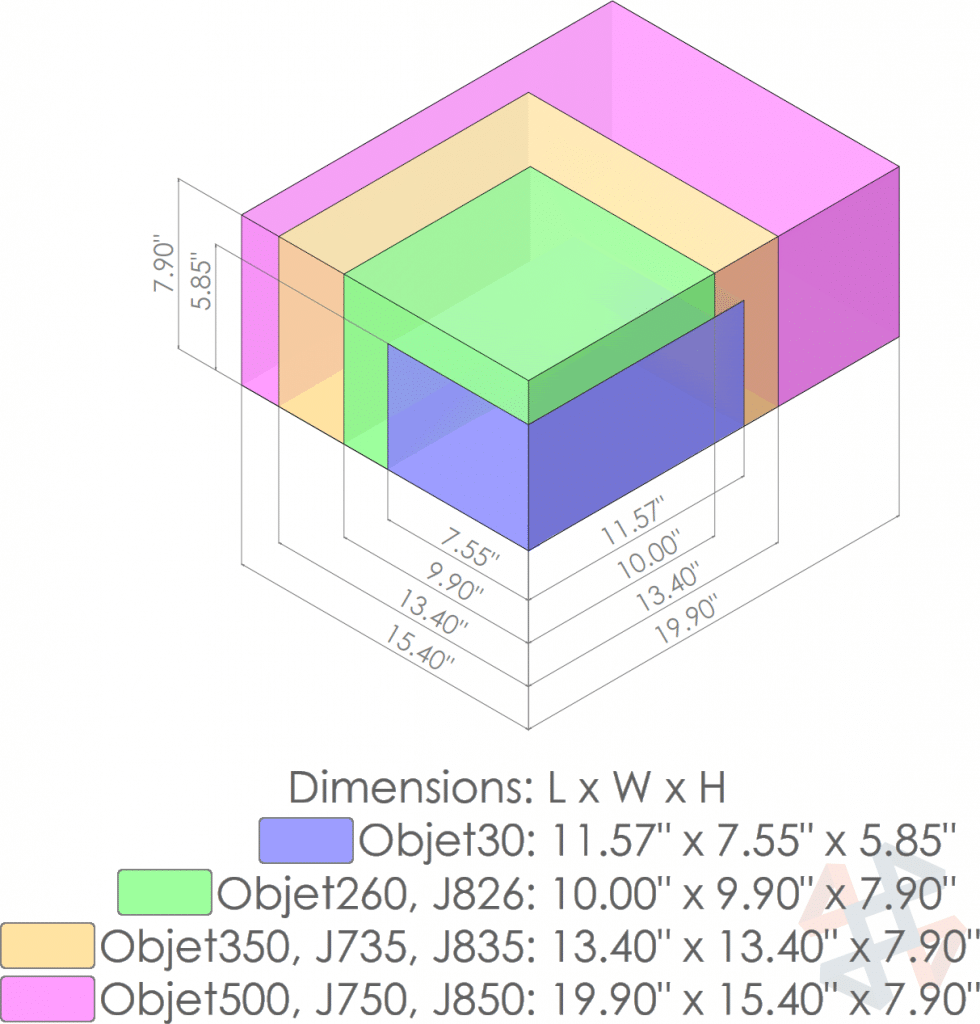
Some interesting things to point out:
- The build height is 7.90” for all the printers except the Objet30 Size, which is 5.85”.
- The Objet30 build width is slightly larger than the next size up, the Objet260 build width. Otherwise, all the dimensions increase (or stay the same) with each size increase.
Now to add some real world perspective. None of the items shown below fit perfectly into their respective build volumes, but they fill well enough for these purposes.
Objet30 Size: 11.57″ Length x 7.55″ Width x 5.85″ Height
For the build volume of the Objet30 size, standard sized tissue boxes were chosen. The build volume fits two of these boxes with room to spare. These tissue boxes were measured to be 9″ x 4.75″ x 3.75″. The height and width of the Objet30 build volume is nearly at capacity with the two tissue boxes on their sides, but they are about 2.5 inches short on the length. Below are some photos of tissue boxes on an Objet30.
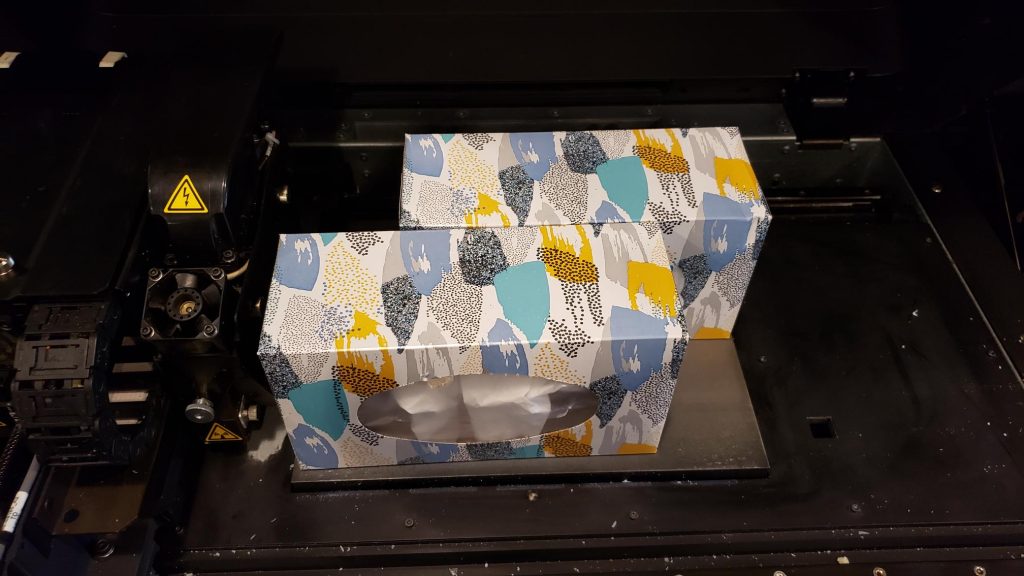
A comparable tissue box was scanned (using a Creaform HandySCAN Black Elite) and inserted into the SOLIDWORKS rendering of the build volumes from earlier so the scale can be compared to the other build volumes.
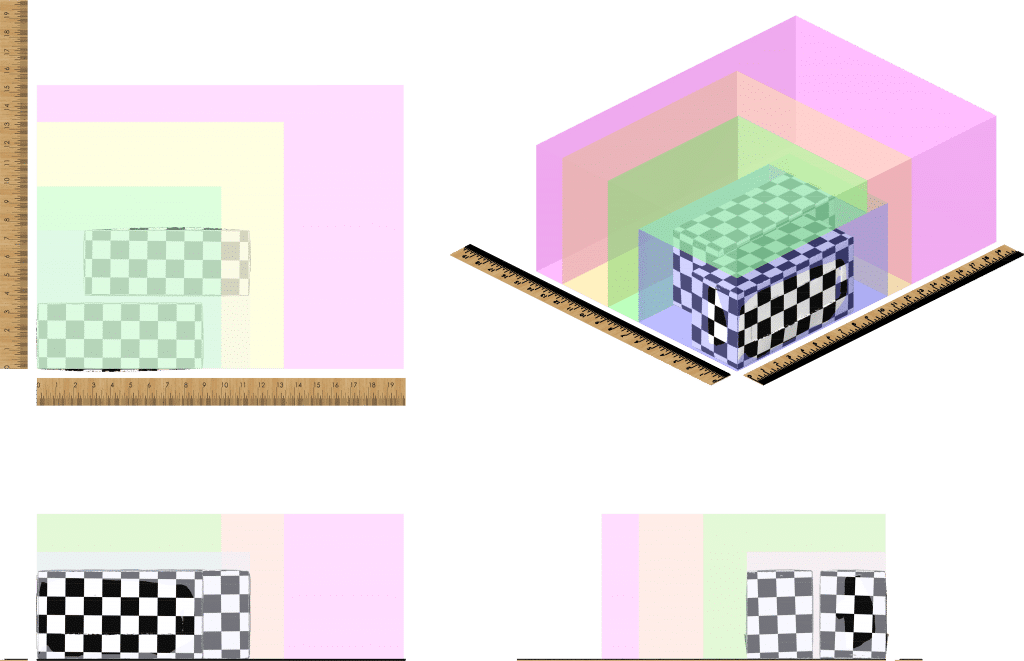
Objet260 Size: 10.0″ x 9.9″ x 7.9″
For the build volume of the Objet260 size, 1.75 quart ice cream containers boxes were chosen. The ice cream measured in at 6.25″ tall and 5″ diameter at the lid. The build volume fits about four of these with room to spare in the Z direction, about 1.5″. The length matches up perfectly with the build volume and the width is just shy by a tenth of an inch. Below are some pictures that were taken in an Objet260 Connex3.
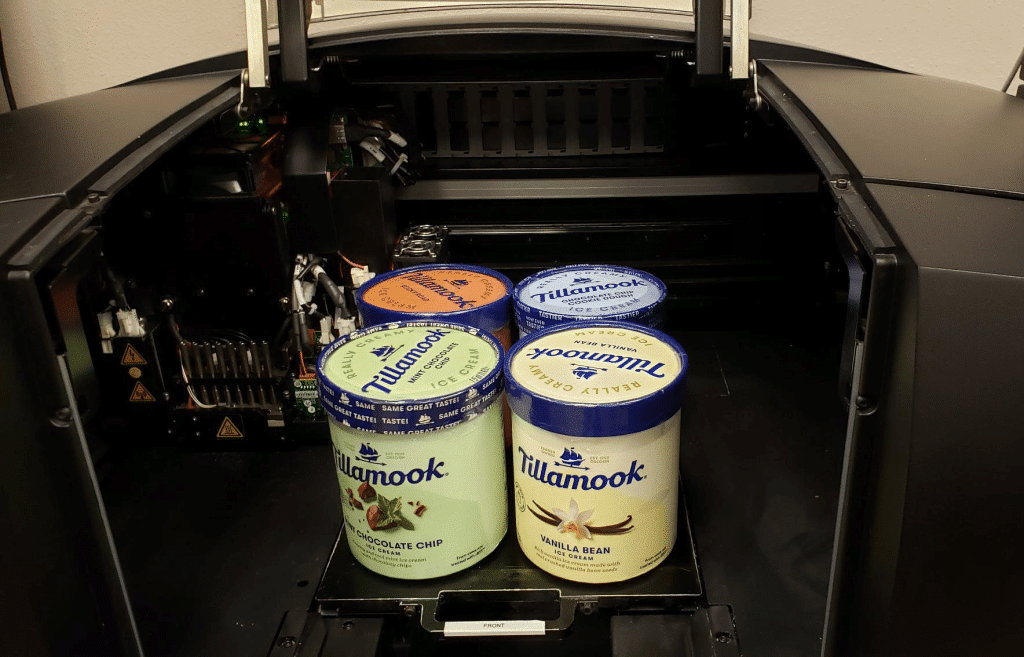
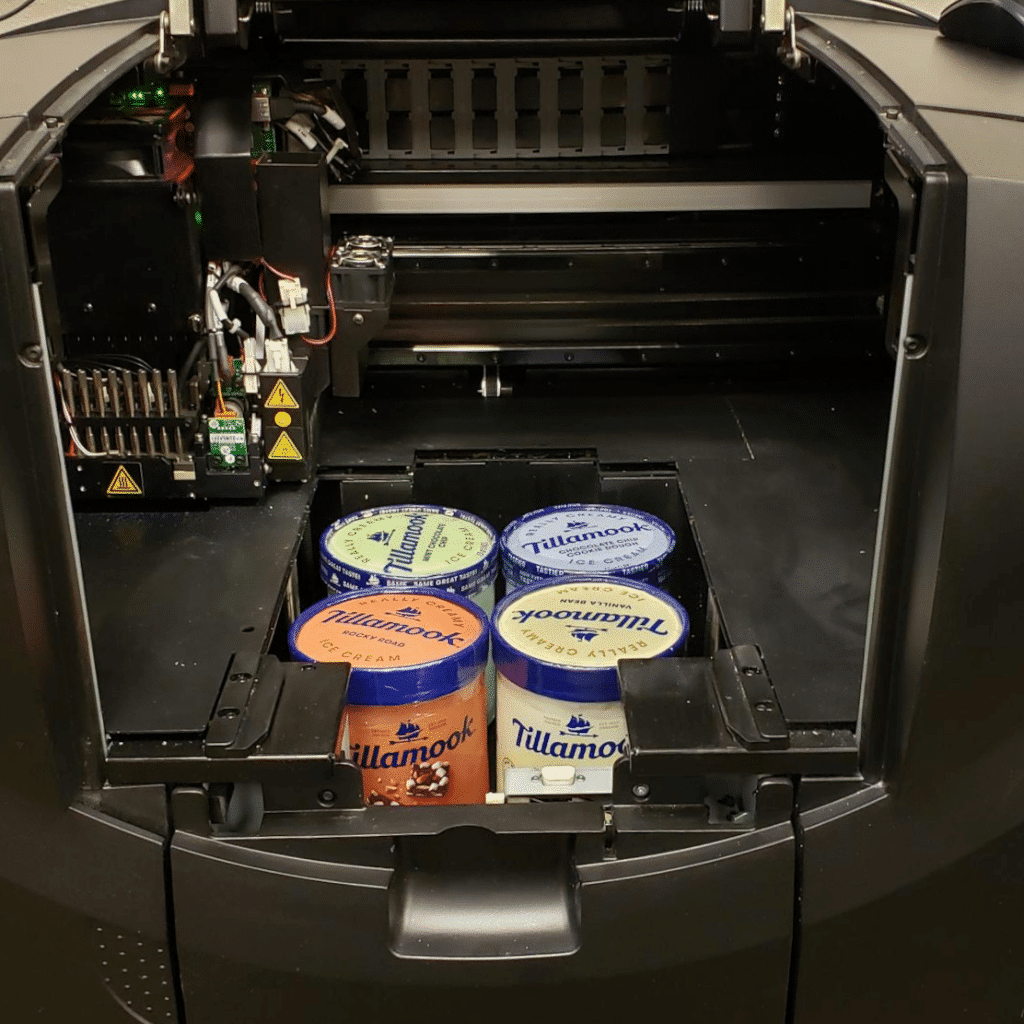
A comparable ice cream container was scanned (using a Creaform HandySCAN Black Elite) and inserted into the SOLIDWORKS rendering of the build volumes from earlier so the scale can be compared to the other build volumes.
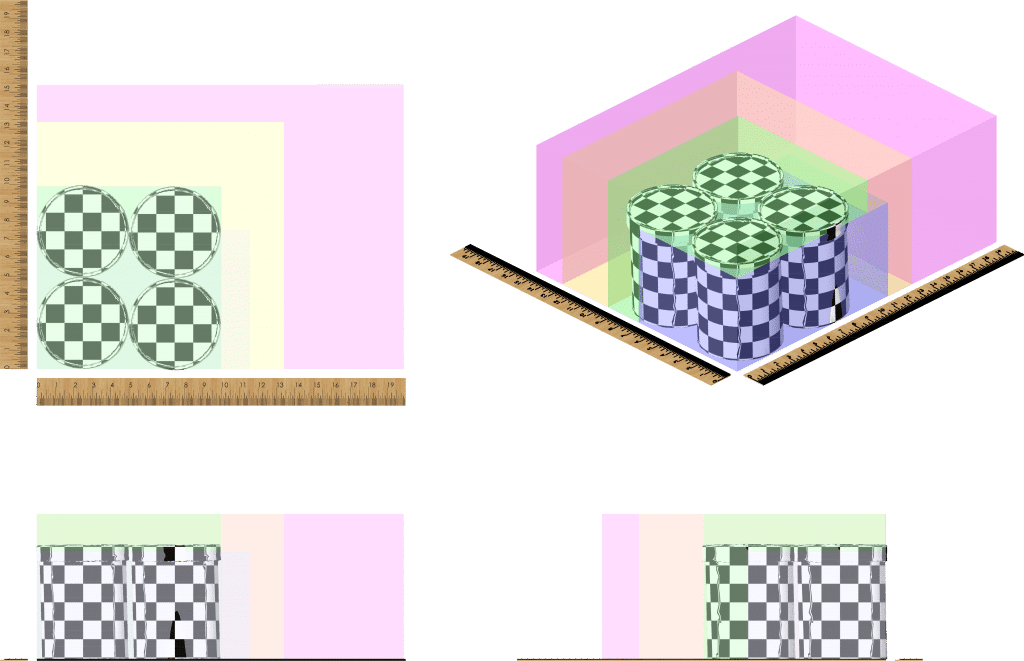
Objet350 Size: 13.4″ x 13.4″ x 7.9″
For the build volume of the Objet350 size, standard 2 liter bottles were chosen. The build volume fits about six of these bottles. One bottle measures 4.25″ in diameter and about 11.75″ tall. The bottles were stacked on their side for this demonstration. Since the build volume height is only 7.9″ and two diameters is 8.5″, there was just over a half inch sticking out of the build volume, but the length shorter by about 0.65″ and the width short by 1.65″. The machines with an Objet350 build volume have a build plate the same size as an Objet500, but the print volume is smaller. For this reason photos for the Objet350 build volume were actually taken on a J750.
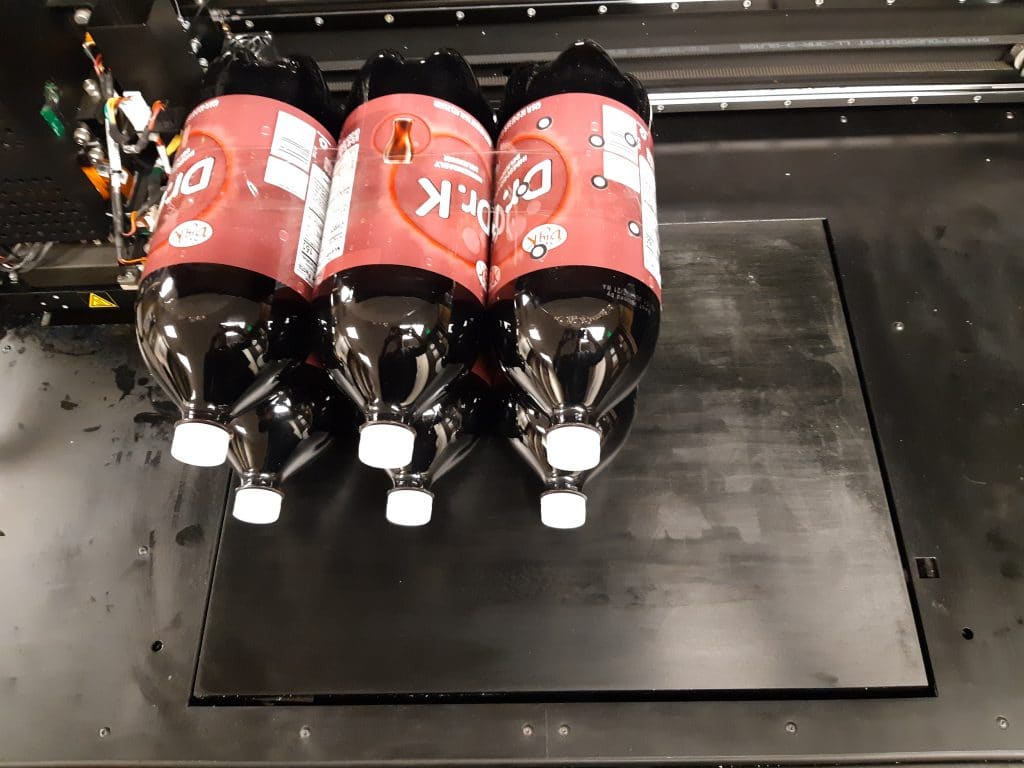
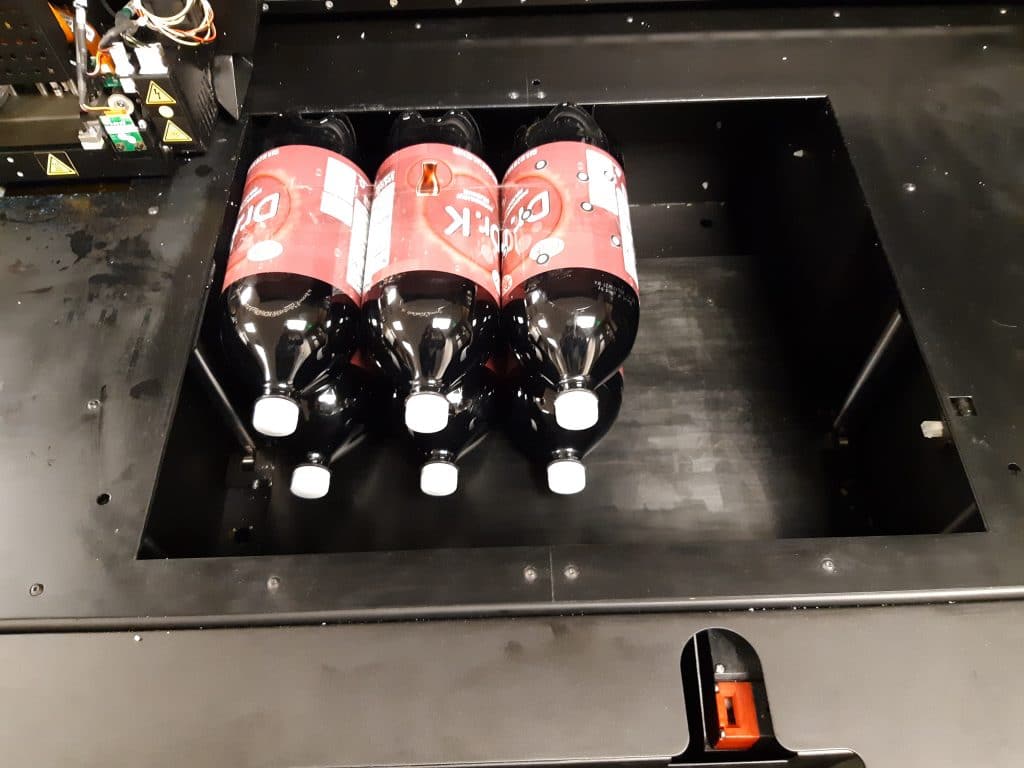
One of the 2 liter bottles was scanned (using a Creaform HandySCAN Black Elite) and inserted into the SOLIDWORKS rendering of the build volumes from earlier so the scale can be compared to the other build volumes. The bottle still has its scanning targets in the images above.
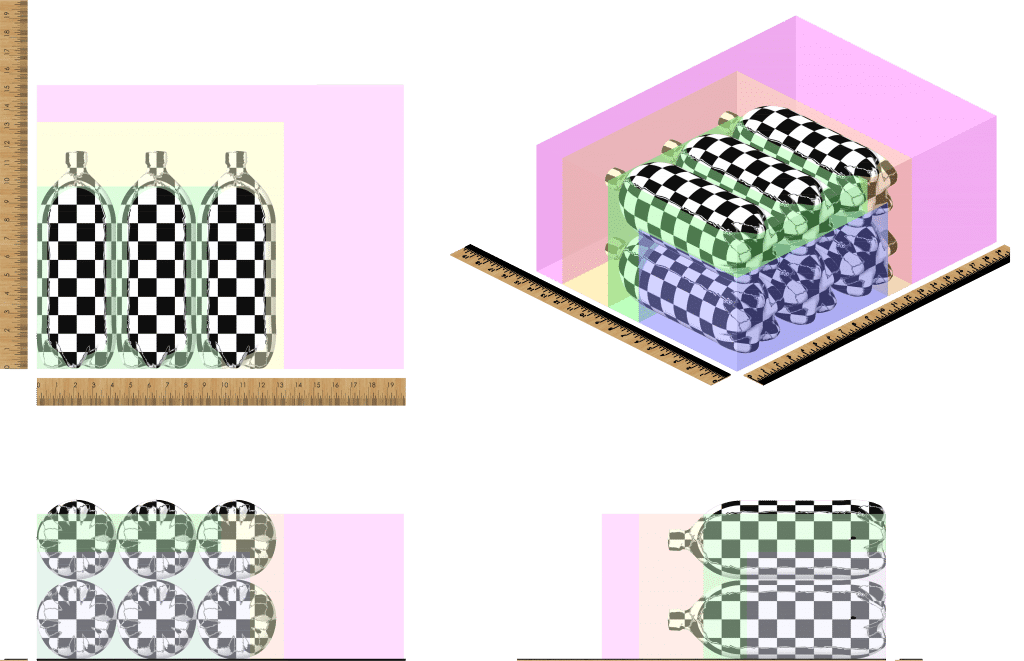
Objet500 Size: 19.9″ x 15.4″ x 7.9″
For the build volume of the Objet500 size, standard grocery store donut boxes were chosen. Each box measured 16″ x 12″ x 2.5″. The build volume fits three of these boxes with lots of room to spare on the length and width. The height only has 0.15″ to spare, but the length has 3.9″ and the width has 3.4″. Below are some photos of tissue boxes on a J750.
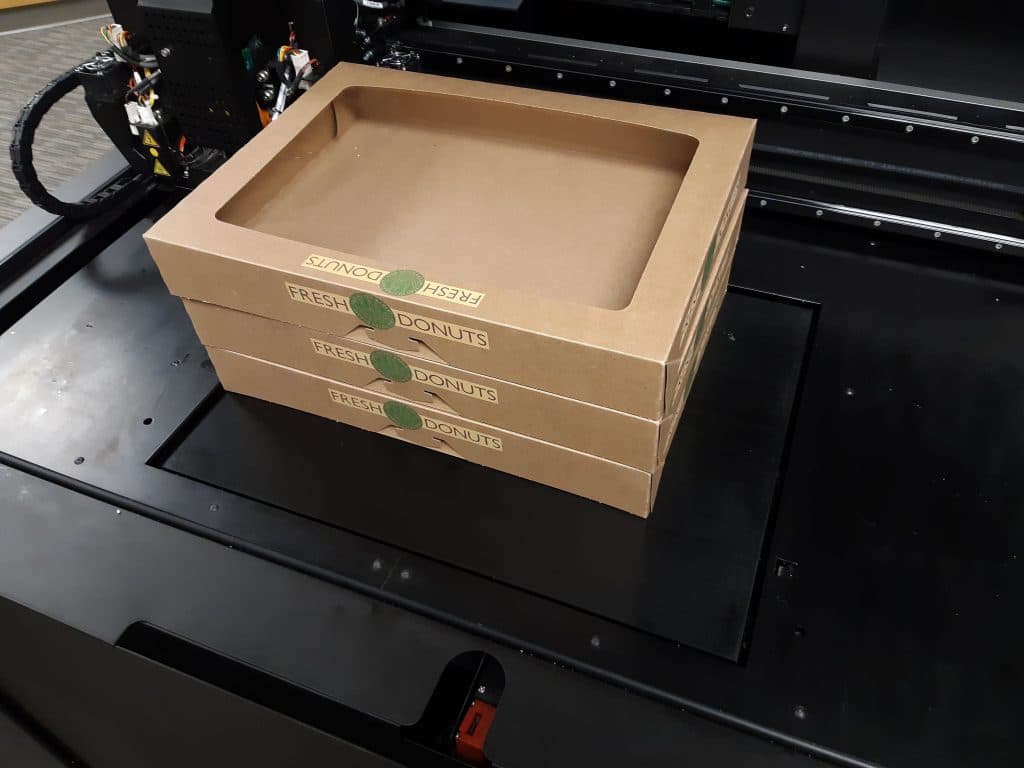
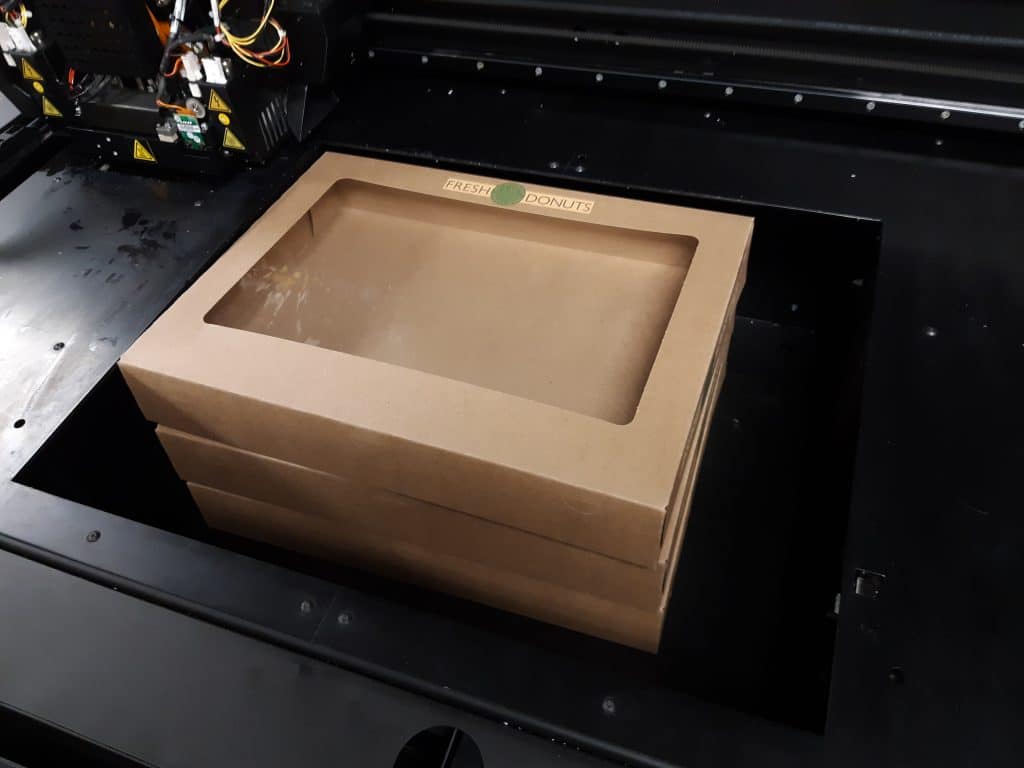
One of the boxes was scanned (using a Creaform HandySCAN Black Elite) and inserted into the SOLIDWORKS rendering of the build volumes from earlier so the scale can be compared to the other build volumes.

Conclusion
Hopefully this content is as helpful as it was fun to create. Now the question is what to do with 4 tubs of ice cream?
Computer Aided Technology exists so our customers can focus on what they do best. If you have questions about our products or want us to cover a specific topic in a future blog send an email to tipsandtricks@CATI.com.
Until next time,
Kelsey Gabel
Application Engineer, Manufacturing Solutions
Computer Aided Technology, Inc.

 Blog
Blog